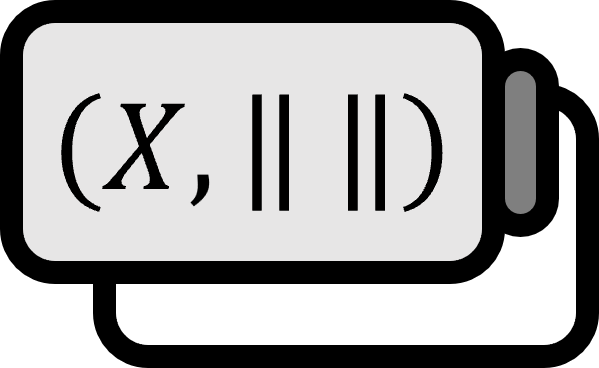Dense Subsets and Closures
Dense Subsets
Definition1
Let $W \subset V$ be a subset of the normed space $V$. For any $\mathbf{v} \in V$ and $\epsilon \gt 0$, if there always exists $\mathbf{w} \in W$ satisfying the following, then $W$ is called a dense subset in $V$.
$$ \left\| \mathbf{v} - \mathbf{w} \right\| \le \epsilon $$
Explanation
If $W$ is a dense subspace of $V$, it implies that any element within $V$ can be well approximated by some element in $W$.
Let $\mathbf{v} \in V$ and assume $\epsilon = \dfrac{1}{k} (k \in \N)$. If $W$ is a dense subset of $V$, by definition, there exists $\mathbf{w}_{k} \in W$ satisfying the following.
$$ \left\| \mathbf{v} - \mathbf{w}_{k} \right\| \le \dfrac{1}{k} $$
Therefore, the sequence $\left\{ \mathbf{w}_{k} \right\}$ converges to $\mathbf{v}$ when $k \to \infty$.
$$ \lim \limits_{k \to \infty} \mathbf{w}_{k} = \mathbf{v} $$
Thus, saying $W$ is a dense subset in $V$ means there exists a sequence $\left\{ \mathbf{w}_{k} \right\}$ of $W$ converging to $\mathbf{v} \in V$.
Closure
Definition
Let $W$ be a subset of the normed space $V$. For a given $\epsilon \gt 0$, the set of all $\mathbf{v} \in V$ for which there exists $\mathbf{w} \in W$ satisfying $\left\| \mathbf{v} - \mathbf{w} \right\| \le \epsilon$ is defined as the closure of $W$ and is denoted by $\overline{W}$.
$$ \overline{W} := \left\{ \mathbf{v} \in V | \text{for each } \epsilon \gt 0, \exist \mathbf{w} \in W \text{s.t. } \left\| \mathbf{v} - \mathbf{w} \right\| \le \epsilon\right\} $$
Explanation
It can be seen as the opposite definition of a dense subset. Since all $\mathbf{w}\in W\subset V$ satisfy $\left\| \mathbf{w} - \mathbf{w} \right\| \le 0$, naturally, $W \subset \overline{W}$ holds.
Theorem
Let $W$ be a subset of the normed space $V$. Then, $W$ being dense in $V$ is equivalent to $\overline{W} = V$.
Proof
It is trivial by the definitions of dense subsets and closure.
■
Ole Christensen, Functions, Spaces, and Expansions: Mathematical Tools in Physics and Engineering (2010), p35-36 ↩︎
